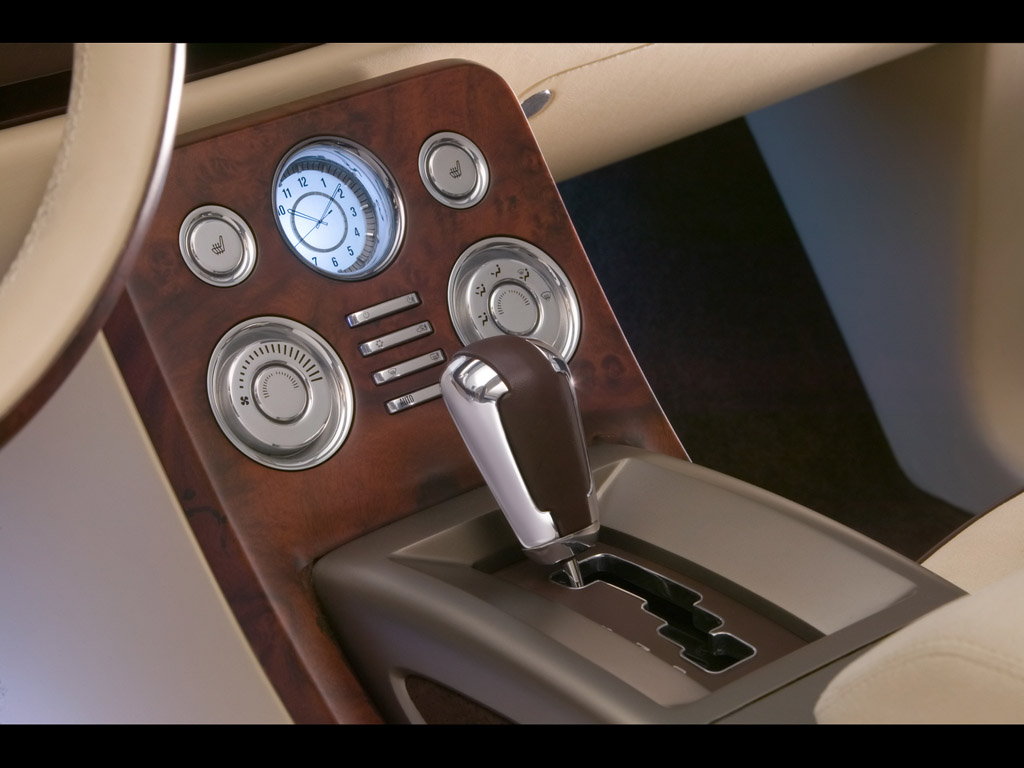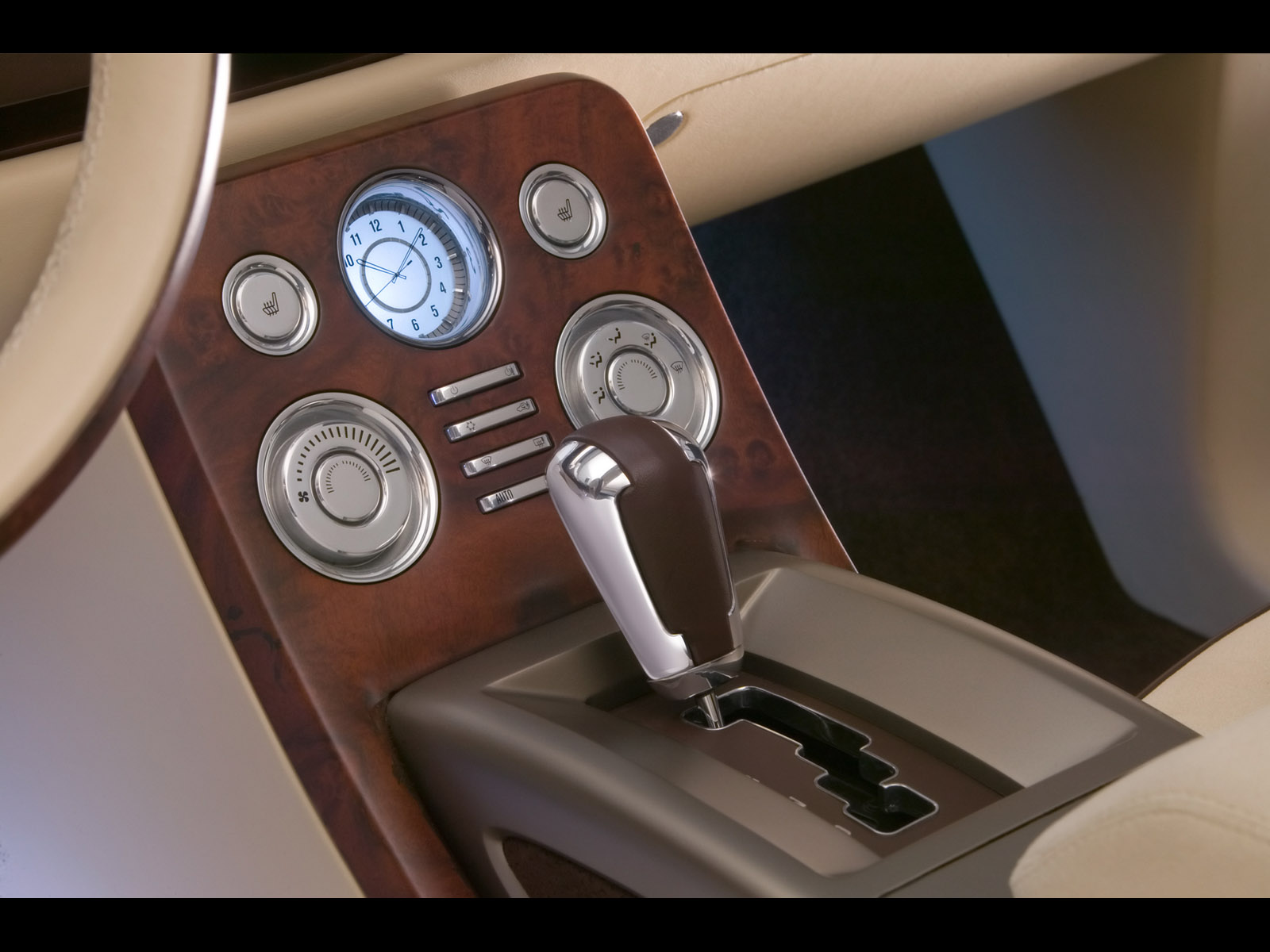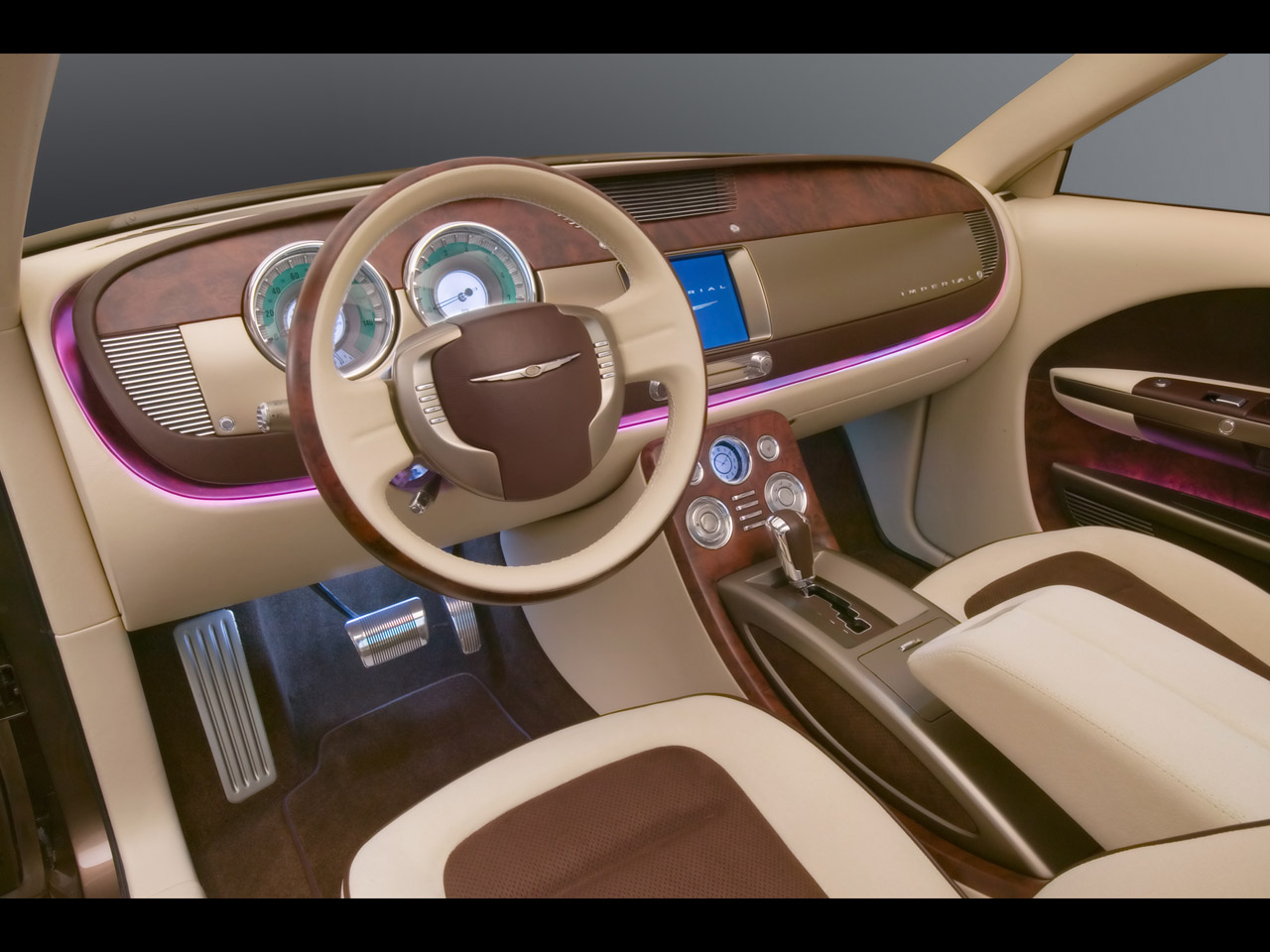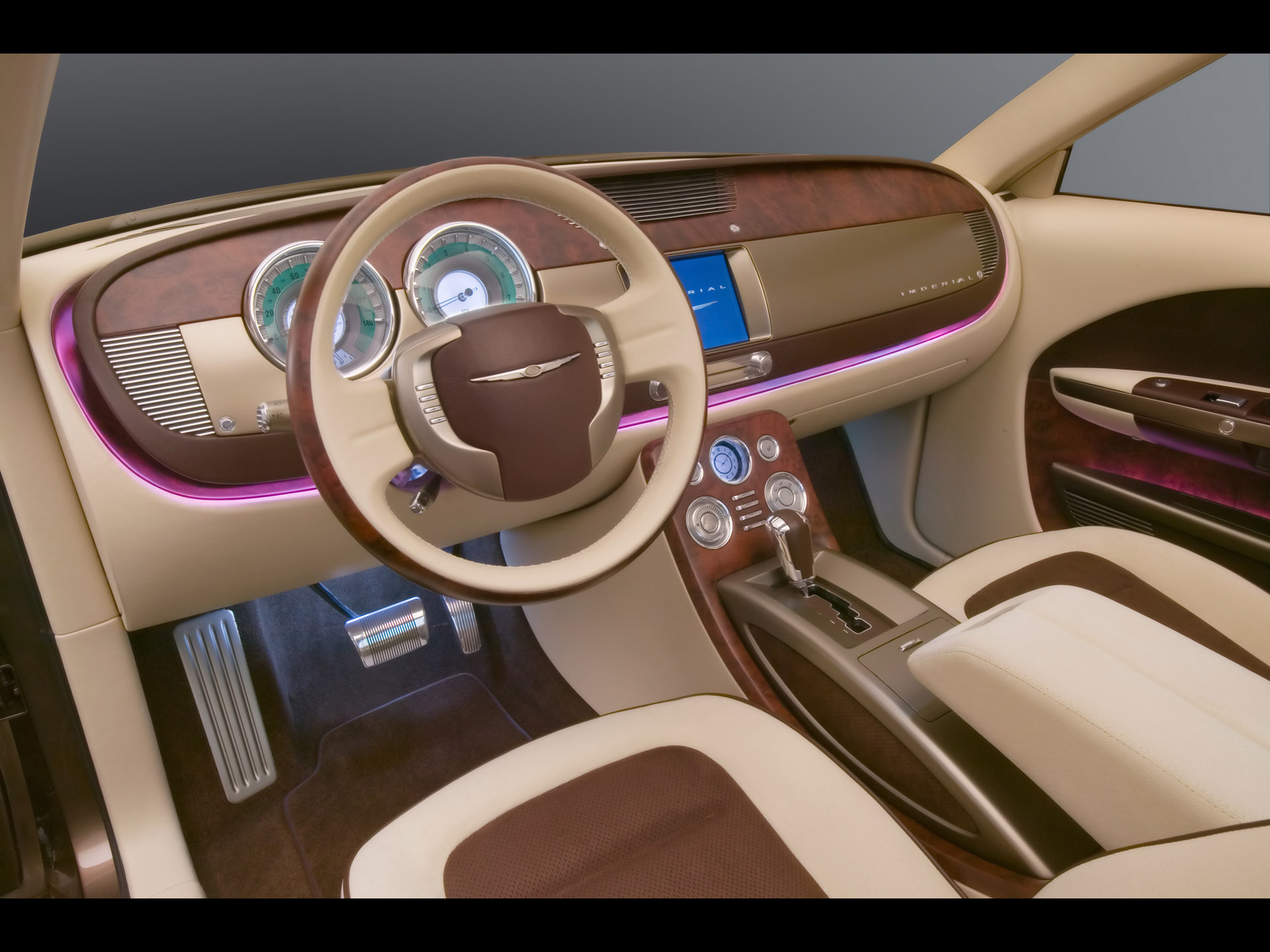2006 Chrysler Imperial Concept
|
Price |
-- |
Production |
-- | ||
|
Engine |
5.7 liter Hemi |
Weight |
-- | ||
|
Aspiration |
natural |
Torque |
390 lb-ft | ||
|
HP |
340 hp |
HP/Weight |
-- | ||
|
HP/Liter |
59.6 hp per liter |
1/4 mile |
14.5 seconds | ||
|
0-60 mph |
5.5 seconds |
Top Speed |
160 mph |
(from
DaimlerChrysler Press Release) Like
the great Imperials of Chrysler’s storied past, the 2006 Imperial
concept vehicle is designed as Chrysler’s flagship, a luxury sedan
that is elegant, provocative, aspirational, yet attainable.
For inspiration, the designers looked not only to the classic
Imperials of the 1930s and 1950s but also to Chrysler’s long
tradition of creative concept cars, from the earlier Chrysler
d’Elegance and Falcon to the more recent Chrysler Chronos and
Firepower. This rich heritage is expressed in the crisp line that
parallels the sill, then arches up over the rear wheel and flows to
the rear of the car, signaling that this is a powerful rear-drive
automobile.
A similarly-shaped line rises up over the front wheel and flows
rearward, falling slightly as in moves into the doors. To fully
realize the subtleties of the chaste body surfaces, every area was
lovingly hand-sculpted in the hallowed tradition of the custom
coachbuilt LeBaron bodies of the classic era.
“The Imperial’s exterior artfully blends a stately nobility, hand
craftsmanship, and modern dynamic sculpture and proportion,” says
Mike Nicholas, principal exterior designer.
To realize the proportions the designers sought, the Imperial,
mounted on a 123-inch wheelbase, is 17 inches longer and six inches
higher than a 300 sedan. The roof was pulled rearward to enlarge the
cabin as well as to create the luxury of length in side view. Most
importantly, passengers sit nearly seven inches higher. Combined
with the higher hood and deck and the large 22-inch aluminum wheels,
this gives the Imperial the noble stance the designers envisioned.
V-shaped in plan view, the front end is dominated by a central
upright radiator grille which imparts a stately eminence previously
unobtainable in all but the most expensive of imported motorcars.
Composed of narrow chiseled linear elements of brushed and polished
aluminum, the grille is capped by a bright header emblazoned with
the Chrysler wings. A polished molding, extending from the grille
header to the base of the windshield, bisects the raised hood plane.
Nested beneath browed cavities, the polished aluminum parabolic pods
housing the projector-beam headlights reprise the individual
free-standing headlamps of the Imperials of both the early thirties
and the early sixties. At the rear, the individual circular
taillights with floating outer rings combine modern LED lighting
with a look evocative of the signature “gun sight” taillights of
previous Imperials. Separate slender LED lamp units provide for
park, turn and back-up lamp functions.
Complementing the hood, the raised deck lid is also V-shaped and
accented by signature silver wings that unfold across its surface.
Body ornamentation is confined to the upper bumper bars, side view
mirrors, side window reveals, and the handsomely-sculpted door
handles.
Hinged at the A and C-pillars, the wide doors can be flung open a la
French doors for a dignified entry, revealing the absence of the
customary B-pillar and permitting a dramatic realization of the
entire interior. Attention to detail and materials is unsurpassed.
In studied contrast to the monochromatic Imperial Bronze exterior,
the high-contrast four-passenger cabin is smartly two-toned in rich
Bay Brown and buttery Birch Creme, inviting the viewer into a world
of supple leather and soft suede complemented by California burl
wood and metallic-like accents rendered in a lustrous warm bronze.
The interior is characterized by the interplay of harmonious,
expressively curving shapes in which the fuller forms of the
instrument panel, door armrest and map pocket elements appear to
“float” above sculpted recessed cavities. Even the seats seem to
float above the floor. Their elliptically-curved bronze-and-burl
side shields echo similar elements recessed into the full-length
floor console.
“We wanted everything inside to be nested, fitted and hand-crafted,”
says Nick Malachowski, principal interior designer, “with every
component subtly reinforcing the hand-sculpted look of the
exterior.”
This is a driver’s car, with a minimum of distracting gadgetry. A
simple touch pad with intuitive controls, mounted close-by on the
suspended center console armrest, permits the driver to adjust
settings for radio, climate and navigation functions. The driver air
bag/horn pad is fixed, allowing the radio and cruise-control
switches to remain settled in the same position regardless of the
turning steering wheel. Boldly bisecting the uncluttered floating
wood-and-bronze instrument panel are two large circular pods
encircling sculpted gauges rendered in satin with polished aluminum
bezels. Reminiscent of earlier Imperials, the exquisitely-detailed
gauge faces are deliberately designed to satisfy the soul as well as
inform the mind.
Since the windshield glass is carried up onto the mid-point of the
roof, front seat occupants enjoy a comprehensive view of the passing
scene. All glass has a distinctive bronze tint to harmonize with the
car’s color palette. Rear passengers can recline their individual
seats while watching different movies, thanks to the console-mounted
dual-view entertainment screen and wireless headsets. The rear seat
headsets store in the package tray at the touch of a button when not
needed.
Finally, there is the luxury of expressive illumination inspired by
the artistry and elegance found in modern interior architecture. LED
lighting, placed behind the “floating” elements of the instrument
panel and doors, is used to enhance the sculptural elements of the
interior. LED lights also provide indirect cove lighting for the
headliner, which in addition offers the choice of
electroluminescently-lit fabric or directed-beam spotlights located
in the overhead console.
Drawing on the rich heritage of its memorable predecessors and
endowed with modern dynamic proportions, this newest Imperial,
crafted with a nobility of stance and purpose, is the finest
expression of the Chrysler marque.



